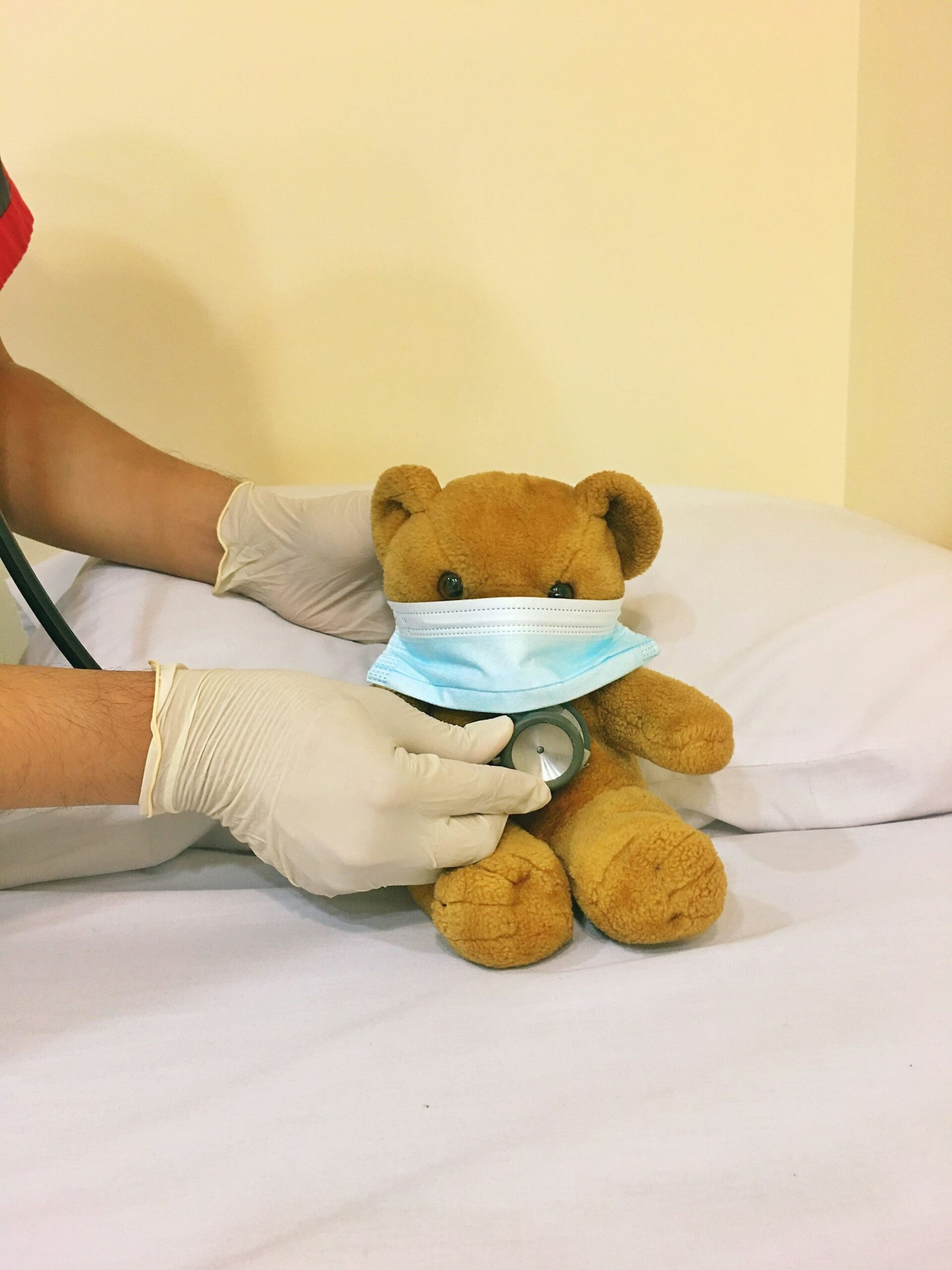Scarlet fever—those words can spark a flurry of questions and, sometimes, quite a bit of anxiety. Parents may lie awake at night, wondering why a seemingly harmless sore throat suddenly transforms into a red, rough rash, why the fever spikes, or how to stop this contagious intruder from sweeping through your household. The scenario is more common than you might think, especially when little ones between 5 and 15 years old suddenly begin complaining of throat pain, only to develop flushed cheeks and that tell-tale strawberry tongue. In this landscape shaped by modern medicine, scarlet fever is no longer the terror of previous generations. It is, however, an illness that demands not just vigilance, but practical know-how—especially when it comes to early signs, prevention, and comfort for a poorly child lying on the sofa as fans spin overhead. So, how can you recognize scarlet fever swiftly? What is the real risk of complications, and how can families break the cycle of infections? Let’s shed light on everything from classic symptoms (and lesser-known signals) to targeted home care strategies, antibiotic stewardship, and the science behind preventing its spread.
Understanding scarlet fever: a dynamic infection with a scientific twist
Scarlet fever—sometimes called scarlatina—originates from a highly infectious bacterium: Streptococcus pyogenes, known in medical circles as Group A Streptococcus (GAS). If a child walks in after school rubbing a sore throat and soon develops a fever, it’s easy to suspect another run-of-the-mill viral bug. Yet, with scarlet fever, there’s a unique progression. First: a sudden high temperature, relentless sore throat, perhaps shivers and headaches. Then, unmistakably, a fine, rough, sandpaper-like rash appears—pinkish or red, radiating from the neck and chest, spreading quickly to the abdomen and limbs. The mouth’s edges may remain pale, a classic feature called circumoral pallor. Meanwhile, the tongue transforms: whitish at first, then—strikingly—bumpy and bright red, resembling a strawberry. Medical textbooks mention this as strawberry tongue, and it’s more than just a curiosity.
This cascade of events is set in motion by pyrogenic exotoxins—special toxins manufactured by GAS, triggering a surge in immune activity (the body’s protective army going into overdrive). So, why do some children exhibit all the classic signals, while others have only mild discomfort or subtle spots? The secret lies in individual immune responses, previous exposures, and genetic susceptibility. Young children aged 5-10 are especially vulnerable, while most under-threes are briefly guarded by maternal antibodies—nature’s silent shield in early life.
How scarlet fever spreads: the invisible journey
Scarlet fever does not discriminate. Its transmission is almost stealthy—through respiratory droplets when an infected child coughs or sneezes, direct contact with contaminated hands or objects, or even close chats in busy classrooms and daycares. Children huddled over homework or engaged in spirited play seldom pause to wash hands or avoid sharing water bottles; this gives GAS a perfect opening. Surfaces—tables, doorknobs, toys—can harbour the bacteria, silently waiting to pass on the infection.
The contagious period is surprisingly prolonged: without treatment, a child may spread scarlet fever for 10 to 21 days after symptoms start. Yet, antibiotics change the game dramatically. Begin treatment, and within just 24-48 hours, the risk of spreading bacteria plummets, allowing children who are feeling well to return to normal routines. One wonders: do asymptomatic carriers exist, quietly harbouring the bacteria? Indeed, some children may spread GAS without showing clear illness, which emphasises the importance of hygiene and rapid response.
Recognizing scarlet fever: reading the symptoms like a detective
Imagine the scene: a child, restless, cheeks flushed, complaining of throat pain. The fever soars—often above 38.5°C—and the sore throat is intense. Swollen neck glands? Almost always present. But the drama builds with the skin: a fine-grained, rough rash appears on the chest, then races to surround the neck, underarms, elbows, and groin. The texture? As if you ran your hand over sandpaper. Sometimes, Pastia lines—inflamed red lines at the folds—add further evidence.
The rash is not the end of the story. The so-called strawberry tongue develops after a few days: white at first, then aggressively red and dotted. Some children may also complain of headaches, abdominal pain, nausea, or even vomit. However, not every case follows the script. Toddlers under three may only be irritable, congested, or have subtle skin changes. In adolescents and adults, scarlet fever can present with surprising subtlety—at times nearly indistinguishable from strep throat, minus the dramatic rash. The skin may peel on fingers and toes as recovery sets in; this, while unsettling, is benign.
Diagnosing scarlet fever: precision in practice
You may wonder: how does a doctor confirm scarlet fever, especially when early clues mimic so many other childhood illnesses? Clinical acumen—observing the rash, tongue, sore throat, and swollen glands—is the backbone of diagnosis. However, a throat swab (sometimes called a rapid antigen detection test) offers a quick answer, pinpointing the presence of Group A Streptococcus. If there’s a doubt, a culture provides double confirmation, minimising false negatives.
Other diseases—like Kawasaki, viral rashes, or reactions to medicines—sometimes mimic the features of scarlet fever but lack the classic group of symptoms, responding differently to antibiotics.
When to seek urgent medical care: red flags for parents
As a parent, trusting your intuition can be vital. If the fever vaults past 40°C, if the child is lethargic, unable to drink, excessively drooling or unable to open the mouth—these are signs that demand immediate attention. Similarly, severe headaches or seizures call for rapid evaluation. It’s better to act decisively; such symptoms can indicate rare yet severe complications or may hint at alternative, sometimes dangerous, causes.
Scarlet fever’s effect on the body: not just skin deep
What’s happening inside? The Streptococcus pyogenes bacterium establishes itself in the throat or—occasionally—the skin, hiding from defences using the M protein (a clever trick to avoid immune attacks). Once these bacteria release toxins, the immune system jumps into action. This flood of immune signals is responsible for the rash, fever, and all the systemic discomfort. If left unchecked by antibiotics, scarlet fever can escalate: bacteria may invade from the throat to the ears, sinuses, deeper tissues, or—even more concerning—trigger rheumatic fever (damaging the heart, joints, or nervous system) or post-streptococcal glomerulonephritis (an aggressive kidney inflammation).
Treating scarlet fever in families: navigating medicines and comfort
Begin with a full 10-day course of antibiotics (penicillin or amoxicillin are preferred, but alternatives like erythromycin or clindamycin step in for allergies). The aim is not just to sooth symptoms, but to eradicate bacteria—lowering the risk of complications and breaking the chain of contagion. In some situations, a one-off injection offers a solution when tablets aren’t an option.
Supportive care carries equal weight. Children need rest—without guilt—alongside plenty of fluids (plain water, diluted juice, or cool milk). Avoid citrus or acidic drinks that prick the sore throat further. Offer cool, soft foods—curd, mashed rice, fruit puree, or ice cream—to encourage eating even when appetite wanes. Fever and aches are best tackled with acetaminophen (paracetamol). Note: non-steroidal anti-inflammatory drugs and aspirin are not recommended for children. If itchiness arises, antihistamines or calamine lotion soothe the rash.
All the while, monitor progress: there should be a clear improvement within 24 to 48 hours after starting antibiotics. No improvement, new symptoms, or alarming signs? Consulting a doctor is non-negotiable.
Possible complications: understanding the rare but real risks
Scarlet fever, while usually straightforward with proper therapy, can have regrettable twists if left untreated. Immediate risks include peritonsillar or retropharyngeal abscess, otitis media (middle ear infection), sinusitis, pneumonia, and—rarely—aggressive scenarios like sepsis or necrotising fasciitis. The most feared long-term outcomes are immune-driven: rheumatic fever (affecting the heart’s delicate valves, joints, and the brain) and glomerulonephritis (where the kidneys suffer). Toxic shock syndrome is an exceptionally rare, but catastrophic, possibility. Early and complete antibiotic treatment stands as the strongest shield.
Prevention: defending your family
A straightforward approach works wonders. Handwashing with soap and water—before eating, after coughing, after toilet trips—helps block scarlet fever’s route. Teach children the right way to wash, cover the mouth for sneezes and coughs (elbow crook method!), and never swap cutlery, towels or toothbrushes. Ventilating living spaces—opening windows wide for a while—cuts down on germs hanging in the air. Keep unwell children away from school for at least 24 hours after starting antibiotics. Regular cleaning (door handles, table tops, toys) makes a difference.
While vaccines for many respiratory infections exist, there is, as yet, no vaccine for scarlet fever—so active prevention is the mainstay. Using antibiotics appropriately, avoiding overuse, slows down the creep of bacterial resistance—a community-wide benefit. If more than a few in a class or neighbourhood fall ill, alerting care providers and public health officials helps check possible outbreaks.
Special cases: younger children, adults, and pregnancy
Under-threes usually escape classic scarlet fever, thanks to residual maternal antibodies—though when it does arrive, symptoms might be mild or unusually subtle. For adults, illness is rarely dramatic, but those with chronic diseases or weakened immunity could face a tougher path. Pregnancy brings special worries, but there’s good news: scarlet fever itself hasn’t been shown to harm an unborn baby, and prescribed penicillins are considered safe during pregnancy. However, avoiding close contact with sick children and prompt reporting of any exposure are simple, wise steps.
Outbreaks and recent trends
Across the world, scarlet fever occasionally surges, as seen in England, Hong Kong, and China—driven by especially aggressive bacterial strains. Antibiotic resistance, particularly for macrolide antibiotics, complicates treatment in such outbreaks. Curiously, social distancing during the COVID-19 pandemic sharply reduced cases, but as restrictions eased, numbers rebounded rapidly. Ongoing vigilance and thoughtful antibiotic use remain key.
Helping your child recover: practical home care
The first 48 hours can bring worry—so early recognition, and knowing when to seek help, matters. Set up a restful environment with easy access to water and food. A favourite book, cool mist humidifier, or gentle TV show can help soothe a restless child. To stop further spread, enforce the stay-at-home rule for at least a full day after antibiotics have started and fever has gone. Quick improvement is typical—lack of progress should prompt a call to your healthcare provider.
Making medication time easier
Sometimes, just getting your child to swallow medicine feels like a marathon. Cheerful routines, small rewards, and simple explanations (“medicine makes you better faster!”) can work wonders. Patience—and perhaps a touch of creativity—turns what could be a stressful moment into a reassuring parent-child ritual.
Working side by side with healthcare professionals
Family doctors, paediatricians, pharmacists—they form a team to support your child. Regular follow-up ensures early detection of unexpected complications, reinforces the value of finishing all medicine, and offers reassurance for worried parents. Open communication not only builds trust, it gives parents clarity and unwavering support through each stage of recovery.
Myths and misconceptions: untangling fact from fiction
Scarlet fever is sometimes still viewed as a relic of the past, yet is common enough in school years. No, mild symptoms do not eliminate the need for antibiotics—full and timely courses prevent stubborn complications. Absence of a rash does not rule out contagiousness; likewise, the classic rash may be faint or even missed on darker skin tones. Up-to-date, honest information empowers families to make wise, confident choices.
Key Takeaways
- Scarlet fever is a highly contagious infection affecting many children, but, with early recognition and timely treatment, a rapid recovery is the rule.
- Watching for the sudden onset of sore throat with fever and the classic sandpaper rash lets parents act swiftly and seek help as needed.
- Full completion of prescribed antibiotics stops complications and shields others from infection.
- Hygiene, home care, and prompt follow-up with health professionals lay the foundation for robust recovery and prevention.
- In moments of uncertainty, tailored advice and resources are available—download the Heloa app for personalised support, free health questionnaires, and direct access to paediatric insights.
Questions Parents Ask
Can adults get scarlet fever, and do symptoms differ from those in children?
Absolutely, adults do catch scarlet fever, although it is usually seen more in children. For adults, fever and sore throat may be present, but the rash and typical strawberry tongue could be subtle or even missing. Even so, with timely treatment, recovery is generally smooth. If you find yourself with unusual symptoms after proximity to someone with scarlet fever, reaching out to a doctor is sensible.
How long is a child with scarlet fever contagious, and when can they return to school or daycare?
A child becomes contagious as soon as symptoms show up and stays so until at least 24 hours after starting suitable antibiotics. Generally, once your child has had a full day of antibiotics and is feeling comfortable (without fever), returning to class or daycare is safe.
Can you get scarlet fever more than once?
Yes, having scarlet fever once doesn’t mean it’s gone for life. The body might develop partial immunity, but different strains of Group A Streptococcus can still cause reinfection. When familiar symptoms appear, even after a previous episode, a consultation is important for best outcomes.
Further reading:









